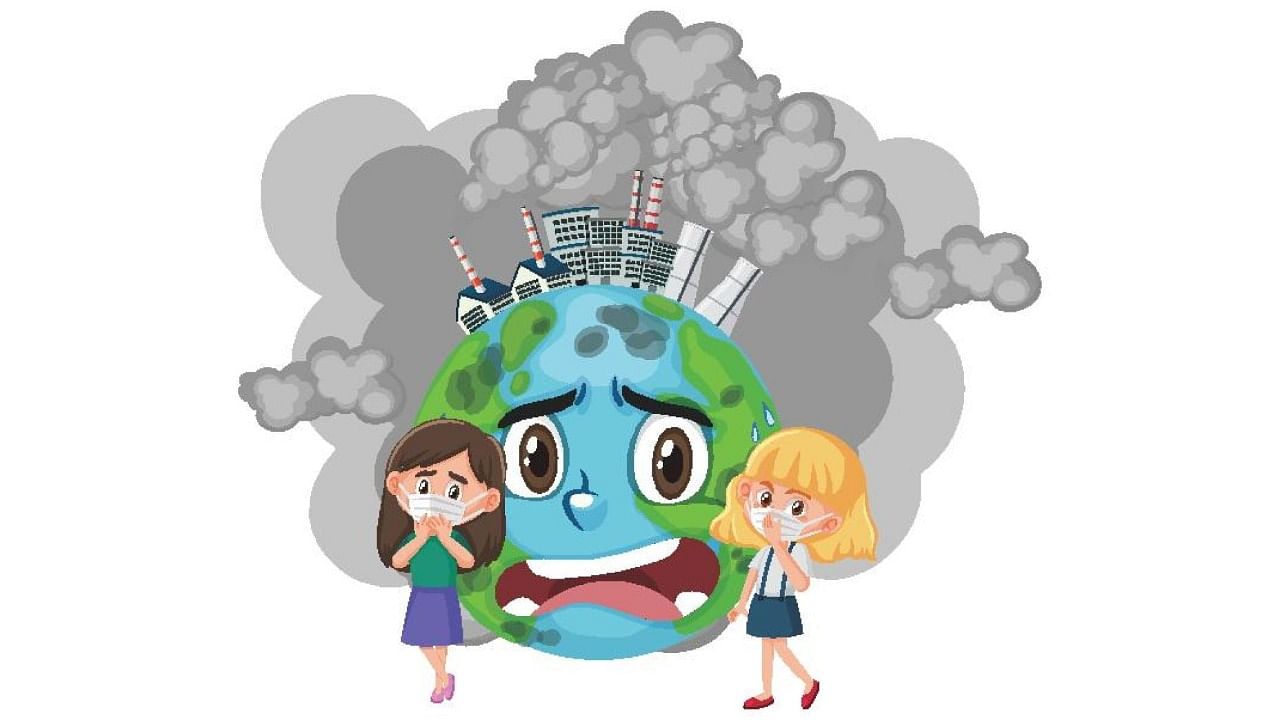
The changes in weather patterns and temperature, over an approximate course of 30 years is referred to as climate change. But human activities are accelerating this phenomenon at an alarming rate.
The ozone layer creates a cover over the earth to protect it from the harmful ultraviolet rays of the sun.
The depletion of the layer could spell danger for humanity.
Every year, September 16, is observed as World Ozone Day. Children tell Open Sesame the disasters they think will befall the earth in the next 20 years if people ignore the vital signs of climate change.
Catastrophes ahead
Sixteen-year-old Aayushi Karthik believes that if humans don’t pay heed to climate change, the earth will deteriorate. “We might witness catastrophic floods, hurricanes, and droughts. The world could be extinct in about 20 years if we are complacent,” she says.
Stopping the emission of CO2 and other greenhouse gases can help in preserving the earth, feels Aayushi. “We must go green and switch to electric vehicles,” she adds.
Bring out the oxygen masks
Pranav Prabhakar paints a dark picture. “More than half the islands that exist right now would’ve submerged, and since climate change leads to extremely abnormal weather patterns, it means that we will start to see little or no animals,” he predicts.
He hopes our society will soon start focussing on planting more trees. “The rate of deforestation is much higher than that of afforestation or reforestation. There must be a balance between the two to ensure the O2-CO2 balance,” he says.
All dull no colour
“The earth wouldn’t look green anymore. It would become a very dry place. There would rarely be rainfall,” says Aarav Nanduri.
Green transport is the way to go. Aarav says, “We can stop this by walking or cycling short distances rather than using a car or bike.”
A concrete jungle
“I see earth as a concrete jungle with no greenery,” says 10-year-old Siddhi Pradhan. She believes that carrying oxygen cylinders will feel as normal as carrying water bottles today. She urges everyone to use renewable sources of energy like wind, water and sunlight instead of fossil fuels.
A decade to save the world
Pramath Iyer says we don’t have much time left to fight climate change. “Scientists have said we have a decade to keep carbon dioxide from reaching catastrophic levels,” says the 10-year-old.
He fears for the plants and animals.“By 2042, 15% to 37% of all plant and animal species are predicted to become extinct. By 2100, half of all species may experience extinction,” he notes.
He believes stricter laws need to be put into place to ensure we have a greener and safer planet in the future.